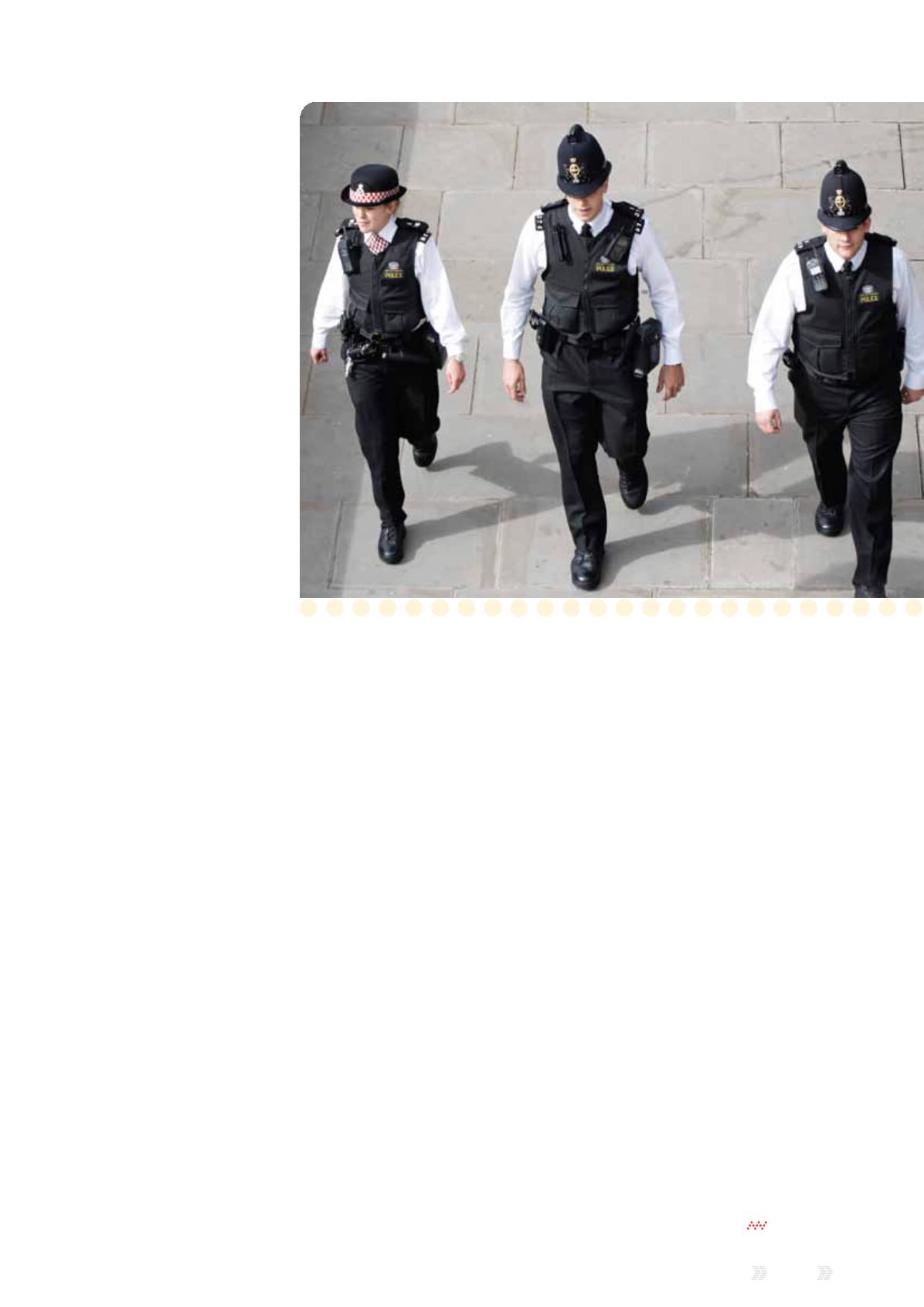
Reach
Issue 7 2014
|
29
are currently in the development
phase. These standards are vital and
when they are available they will not
only help to ensure the safety and
security of capabilities, but also that
savings in relation to economies of
scale can be accessed. Whilst we
endeavour to guide these standards
for the future of emergency services
communications, the best way
forward currently for our emergency
services is via a hybrid solution. What
do I mean by a hybrid solution?
A subject of recent industry debate –
white papers and reports consider the
best way forward for mission critical
communications. In Germany a recent
government white paper concluded
that a hybrid solution of TETRA for
voice and LTE for data would be
required for many years. Additionally,
a recent US Congress report by the
Congressional Research Service
commented that their government
funded 4G service would only carry
data and video for some time and their
equivalent of TETRA would still be
required for mission critical voice.
Examining these debates along with
the needs of our continually evolving
emergency services, has suggested
the best way to move forward is
with a solution that balances the
mission critical benefits of a dedicated
network and the cost advantages
of a commercial service – a hybrid
Network. In the hybrid model the
emergency services retain the benefit
of secure mission critical voice until
a standards compatible LTE voice
capability has been shown to deliver
to mission critical requirements.
The dedicated element of the
network provides a national resilient
communications platform that covers
the landmass of Great Britain, but also
enables users to access commercial
networks as operationally appropriate.
We can already see emergency
service organisations trialling hybrid
approaches in their communications
today. For example, Hampshire Fire
and Rescue Service (FRS) utilise
Airwave’s Emergency Services
Network (ESN) for mission critical
communications with the control
room, whilst trialling the benefits
of reliable broadband provided by
Airwave’s 4GMax.
This type of hybrid approach
enables Hampshire FRS to support
and manage resources and
equipment on-site at incidents by
being able to access vital information
such as building and site plans and
risk assessment forms which are
updated every 30 minutes.
Surrey Police have also seen the
benefits of a hybrid approach whilst
trialling 4GMax. Using reliable and
secure broadband in a different way
to Hampshire FRS, Surrey Police
stream live video to their control
room from its patrol cars, significantly
enhancing the force’s ability to
perform risk assessments during
pursuits and its overall command
and control capability.
They also use it to enhance their
Automatic Number Plate Recognition
(ANPR) service and reduce the costs
and improve reliability when compared
to their previous method which
involved satellite communications.
North East Ambulance Service (NEAS)
saw the benefits of supporting the
whole incident lifecycle with this
hybrid type approach. Using 4GMax,
information on the patient’s situation
could be recorded and instantaneously
sent to the receiving hospital.
A number of police forces are
also transforming their processes by
recording data, conducting
searches at the scene of the
incident rather than communicating
back to the control room to conduct
these, and producing reports
at the scene of an incident
through the use of Airwave’s
mobile data service, Pronto. The
agile working environment created
for emergency services through
the ability to quickly send and
receive large amounts of data
whilst attending an incident,
and maintaining mission critical
communications provides a number
of benefits that include increasing
visibility of emergency services
with the public as well as a reduction
of time spent on recording and
duplicating reports whilst increasing
efficiency through reducing errors.
By exploring the capabilities
and benefits of a hybrid approach
today, these emergency services
organisations are not only making
the most of new technology faster
than before, but are paving the way
for LTE standards by trialling, testing
and assuring communications in
mission critical situations, while
losing none of the critical features
they have come to rely on today.


